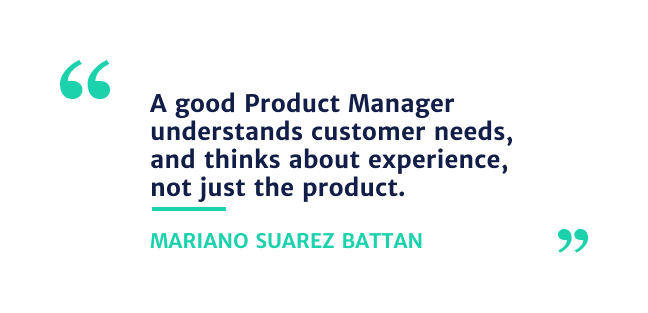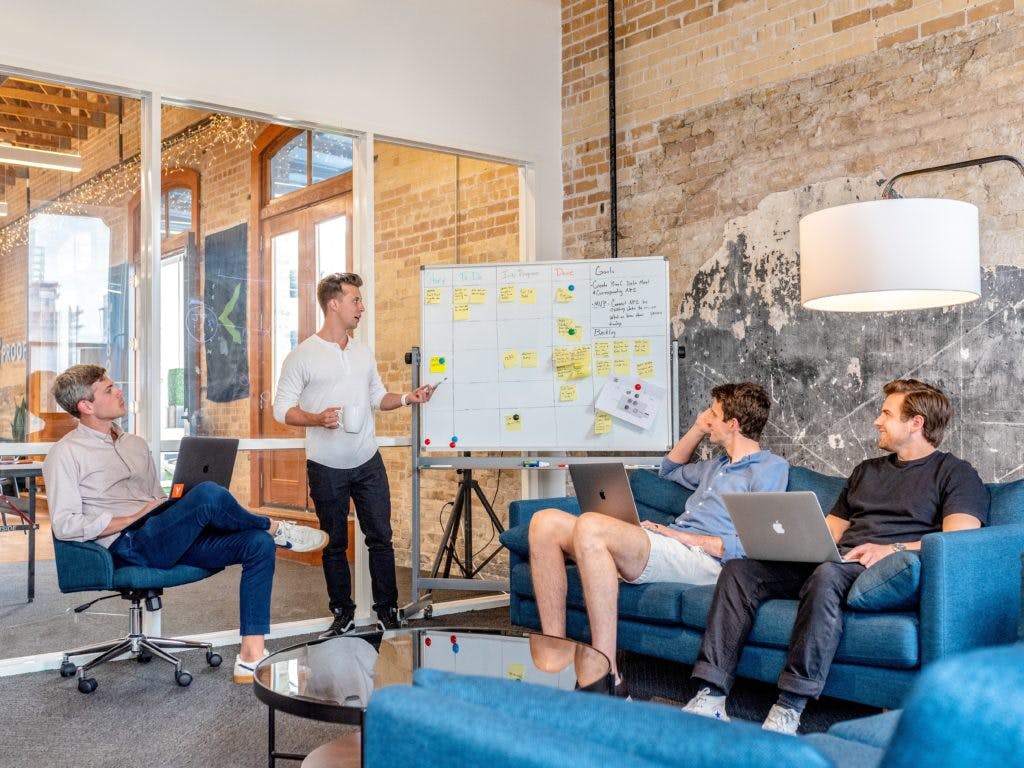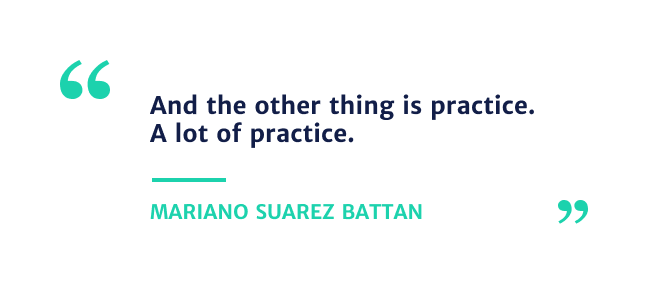Season 3 - Episode 8
The Power of Creative Problem Solving
Mariano Suarez Battan is the Co-Founder and CEO of Mural, Mural is a digital workspace for visual collaboration that enables innovative teams to solve important problems. Mariano talks us through the core inspiration of Mural, his experience on continuous learning, the role of a facilitator, and more.

Watch The Episode Here: The Power of Creative Problem Solving
“Question [00:03:22] Tell me more about that moment where you decide to switch gears from working at Disney to starting Mural.”
Mariano [00:03:32] Sure. So I started mural because I needed it for myself first, which back in 2011 and 2011, I was trying to come up with a new game idea. A new game about emotions about characters that would dance, and I had like a 66 slide long deck where I’ve just collected ideas, exploration of what this could be. I thought it would be cool to introduce things around, again, empathy. Like when people were tweeting, changing into color so that in the game we changed the color and the game would change and would morph. So there were a lot of ideas and observations on what people were curious about in the marketplace.
But the reality is I had no clue what I was doing and was presenting this “pre-idea”, let’s call it. I remember going forward some backward in our slides a lot. And we were a little bit confused. The other thing was that my intention, when I was showing this work in progress, was for people to contribute to it, not to judge. But I was seeing that people were reacting and judging my very nascent idea. I realized that the keynote or PowerPoint is designed to present and people just receive information, or they judge a sales page, an investor pitch.
So the mindset and space didn’t have the affordance that we had when we worked together shoulder to shoulder on a whiteboard. And that was the original insight, that, to be honest with you, if you were to start over again, I wouldn’t start over the same way, but it’s still true at the core of what Mural is.

“Question [00:10:37] In your experience, building products across different continents, what are some of the misconceptions that you’ve seen throughout your career? ”
Mariano [00:10:48] Augustin is our head of product, and he gave me misconceptions in particular around product management. He said that the first one is that the program manager has to come up with product ideas and solutions. And he claimed that ideas come from anywhere. And the product manager’s job is to identify ideas anywhere and facilitate sessions to get those into the mix. And then the other misconception is that he doesn’t believe that managers need to do project management. I mean, they can, but it’s not that the program manager solves all of your tasks.
“Question [00:11:36] How much overlap do you think there between a good product manager and a good CEO? ”
Mariano [00:11:58] Of course, a good product manager would understand customer needs, we think about the experience, not just the product, and have like clear KPIs that are hopefully very much attached to customer love and revenue. So in that regard, it’s pretty similar. The only thing is that as a CEO, you spend much more time selling, much more time making sure that other parts of the company are also delivering another type of experience. The buying experience should be as important as the user experience. So, you need to be zoomed out a little more than a product manager, but when it comes to the fundamentals, it’s always all the customer experience. It’s always around running people behind that vision and mission. And then of course being super focused on metrics, quantitative and qualitative.
You might also be interested in: 6 Product Managers Who Became CEOs—and How!

“Question [00:13:27] How do you learn and what are some of the things that you are now interested in, in learning to continue growing as a leader? ”
Mariano [00:13:26] The most important part is about leadership like you just mentioned. Not just my leadership, but the rest of the leaders in the company, because in a way as we grow as a company, misalignment can be lethal. So right now I’m trying to work a lot of my time to be clear on expectations, introducing ideas from, the rest, spending a lot of time on the vision, on how we do things, and making sure that there’s the minimum amount of gaps of understanding. And also putting together the framework for people to also be able to lead themselves and not just follow the leader.
So we like, OKRs because of that, sometimes you are more outcome-based than ours because some quarters needed it, we know what we need to get done. But some of the quarters are more exploratory. I’m making sure that I also do that with the new cohorts of people that are joining the company over and over because there’s some disconnect right now. Some folks have been listening to me for nine years now. And then some are just getting started.
You might also be interested in: Google Product Manager Reveals Her Leadership and Career Tips

“Question [00:17:14] At what point do you delegate? Where do you think is the right balance? ”
Mariano [00:17:40] When it comes to the product in particular, yes, it’s really hard for me not to solutionize. So say, this would be a great idea or look at how these other people are doing this and that. So I forced myself into documenting those in Mural and putting together ideas, just for me too as a meditation type exercise, whereas at least I’m putting them somewhere.
Every once in awhile, I like to do a casual session with the designers and product managers say, “Hey, look, these are some things that I’ve been thinking about in the last quarter”. But the reality is that I’m spending most of my time, making sure that, again, the vision is clear, especially bringing that vision into the marketing part of the team that it’s harder for them to grasp the product. And what the jobs are to be done and so forth. So I’ve been spending most of my time there.
When it comes to working with the product, I’m very eager to go back into the kitchen a little more. I have been building my go-to-market organization, but in general, I come in and say to them and I always ask the same question, “what’s the customer experience? What are they going through?” So starting with a product problem side. And just making sure that they repeat, repeat, and we have alignment there.
The reality is that we have a one year, maybe two roadmaps that we have clarity on known knowns that we need to do. So I’m getting ready to prepare. So what’s next? How do we either disrupt Mural, cannibalize, Mural, compliment Mural? That’s what I’m doing right now. Well, not really, that is what I want to do as I wrap up some things on the go to market. A little bit of meditation and a little patience. And also, preparing, coaching the guys to focus on the problem, and then preparing. I didn’t know how to do it because I mean, it’s going to be the first time that we have to think of, the second product, but, that’s what’s next. And I think I’m going to be part of that for sure. Intimately.

“Question [00:24:18] What is the role of a facilitator and how do companies benefit from it? ”
Mariano [00:24:22] Sure, there’s an ebook that we put together, the ultimate guide for facilitating remote work. If you go to mural.com/ebook, you can check it out. It’s short and sweet and a lot of interesting ideas. So facilitator, facilitation, right? We’re seeing a lot of companies hiring facilitators, they generally do a lot of project management too, because they realize the power of them coming into meetings, workshops, and leveling up the conversation.
When it comes to facilitation, you and I facilitate meetings all the time. You are doing facilitation right now of a fireside chat. So all leaders facilitate certain meetings. Sometimes we do it poorly, sometimes we have a guide, sometimes we don’t. But I believe that core competency that we all need to learn for the future.
When it comes to things around that, it’s like that, there are principles. So making sure that everybody is participating, time box and micro time box sometimes, leave some time for solo work and coloration work. Asynchronous and synchronous work, even within the meeting so that you give time for everybody to input their observations or ideas, making sure that he leaves space for diverging before you get into convergence. So, there’s a lot of techniques, and of course, learning and getting the energy up and up from the meeting. I think that once you agree in the beginning that this meeting, the end goal is meetings to do X, and we’re going to be doing these different steps. That’s also very important for the facilitator to bring everybody and ask them to check-in.
This is not just cash flow. We are here, we’re present, and we’re all going to be able to help each other achieve the end goal of this workshop. We have to be super clear from the beginning. So I learned a lot to do there. I like to practice there. And the reality is that you can only get better at that, by doing two things. One is probably mimicking someone, copying how someone is like us. So what you did was excellent, bringing folks that are good at that. And the other thing is practice. A lot of practice.
You might also be interested in: One-on-One Meetings: 5 Common Mistakes Product Managers Should Avoid

Thank you for tuning in to Season 3 of the Product Podcast by Product School. Stay tuned for more!
Listen to our episodes on your favorite platform
Stay tuned for new episodes
By sharing your email, you agree to our Privacy Policy and Terms of Service






